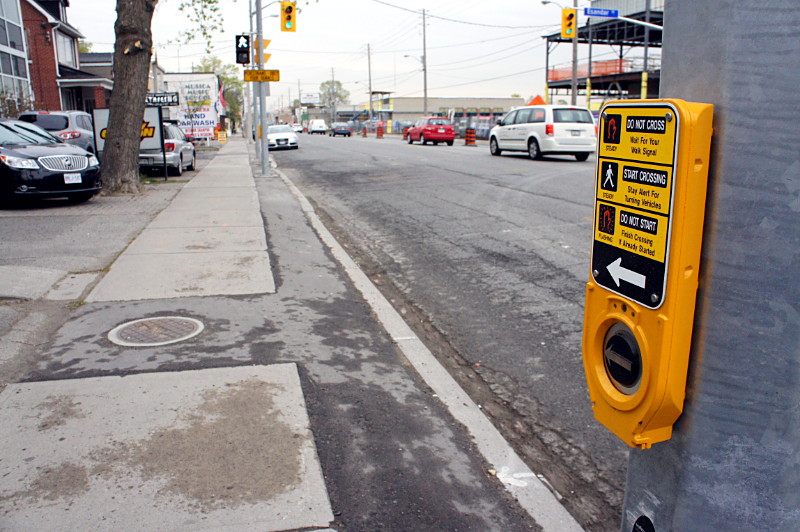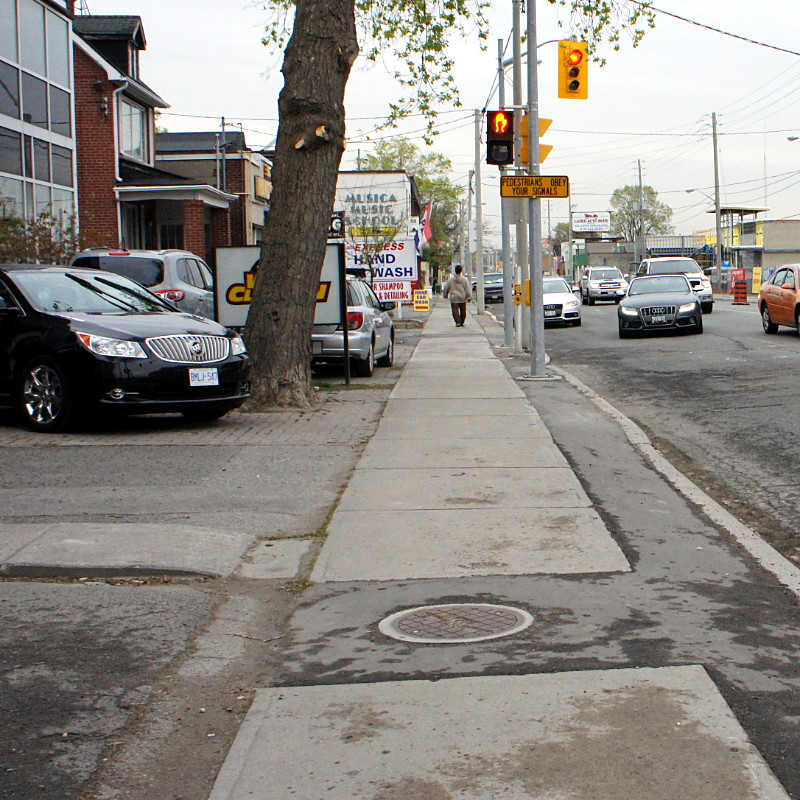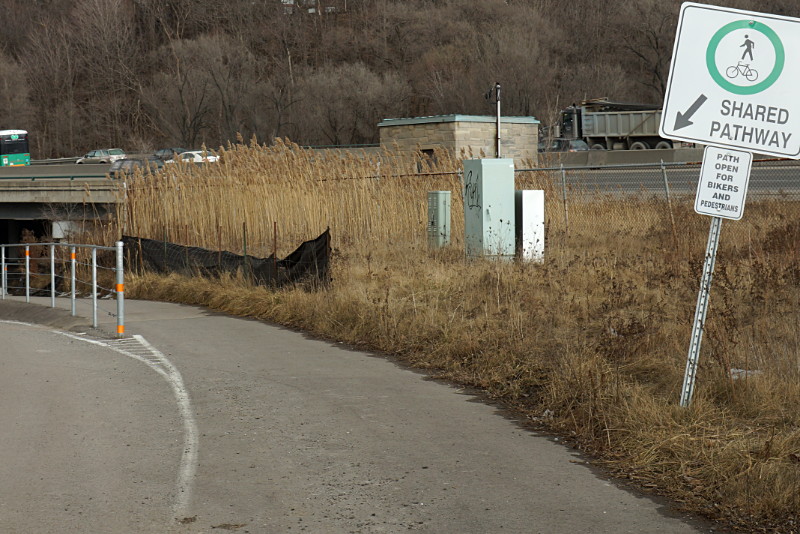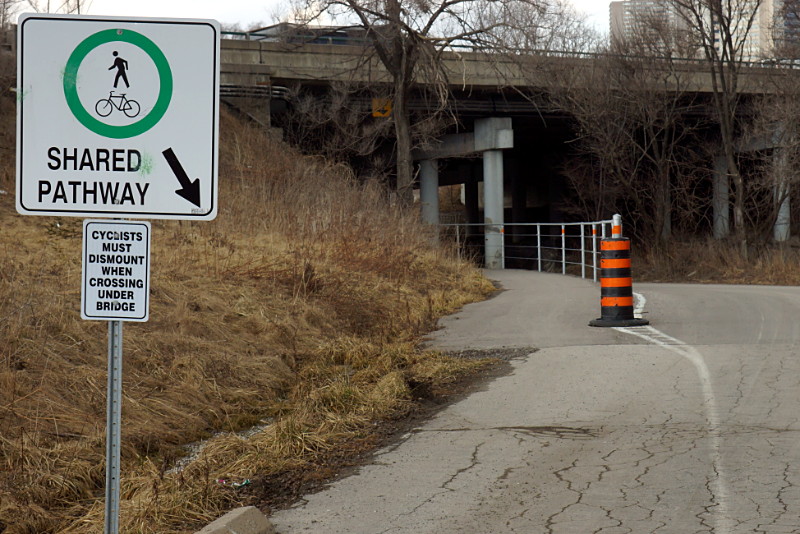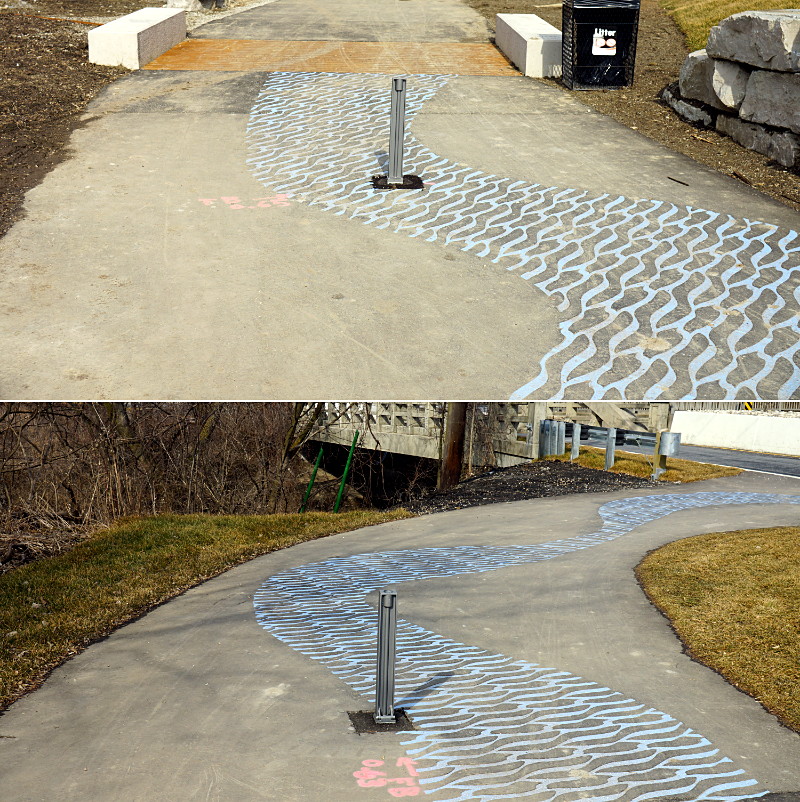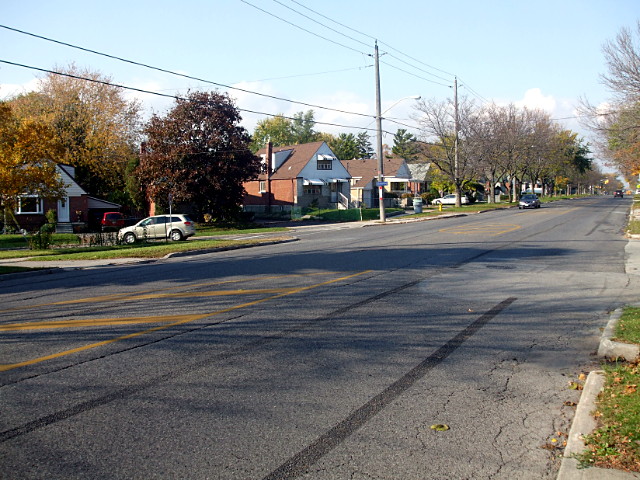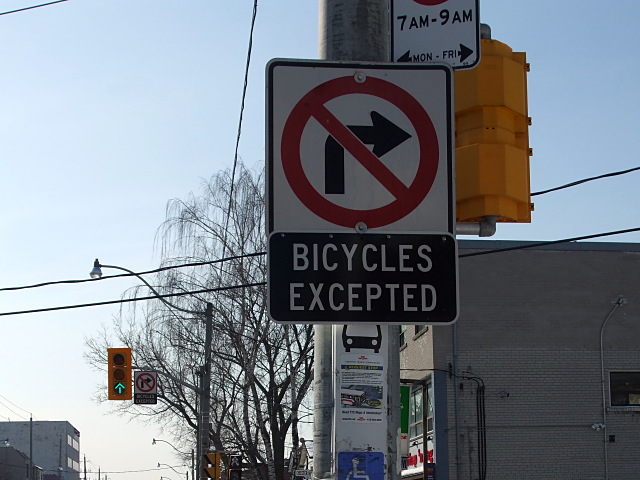The Toronto Police issued a press release (thanks to Martino for the link) on Sunday announcing the start of Operation Safe Journey, a week-long blitz against drivers and cyclists who endanger pedestrians. Bravo! But tellingly, the press release also promises to target “pedestrians who fail to obey traffic signals or who fail to yield to traffic.”
If you believe the CityNews take on the crackdown, it’s aimed almost entirely at pedestrians. City’s story typifies the blame-the-victim mentality of the media and the police, stating, “Many of those killed last year were guilty of crossing the street in the worst possible place and at the worst possible time.” Mmm, smells like Rob Ford. Yes, it’s your own damn fault if you venture into the city without a car. You’ve got some nerve, not waiting (and waiting, and waiting…) your turn to cross the street. Don’t you know that streets are for cars?
So as a public service to the Toronto Police, I’m rewriting their press release. This is how it should read:
In 2006, there were 57 traffic fatalities in the City of Toronto. Thirty were pedestrians, with one?third of them over 65. In contrast, 38 people were killed by guns in the City of Toronto in the same period.
These were tragedies that need not have occurred.
As members of our society and as road users, whether as pedestrians, cyclists, or motorists, we share a responsibility for preventing these tragedies.
Motorists must exercise more caution when manoeuvring their 2-tonne vehicles around the city, and remember that pedestrians don’t have crumple zones, air bags, or seat belts to keep them safe in collisions. In fact, in your haste to be the last car turning through the advanced green a full 5 seconds after it stopped flashing, or make that right turn without looking where you’re going, or zip past the bus stopped in front of the crosswalk, you’re putting pedestrians’ lives at risk. Oh, and your premiums may go up a little after your insurance company pays a few thousand dollars to scrape a dead pedestrian out of your grill.
Being in a car does not automatically give you the right of way. Shaving a few seconds off your mad cross-town dash isn’t a good enough reason to endanger someone’s life. Just because a pedestrian isn’t in a car doesn’t mean that she isn’t in as much of a rush as you are to get to where she’s going.
Pedestrians should remember that many motorists don’t see you unless you’re inside a shiny metal box on four wheels. Many of those that do see you consider you to be a nuisance, serving no purpose but to delay them on their appointed rounds. The motorists who do treat you with the respect you deserve risk being rear-ended by all of the other motorists. Please look both ways before you cross the street.
On Monday, March 19, 2007, the Toronto Police Service will embark on a one?week education and enforcement campaign entitled “Operation Safe Journey”. This campaign will target motorists whose aggressive driving habits endanger the safety of pedestrians.
And next week, we’ll be running Operation Safe Shootings, a blitz targetting people who get shot. It’s their own fault, you know.
Of course, what they really wanted to write probably looks something more like this:
Hey Pedestrians! Get outta the way!
Note for the argumentative: I am a motorist, cyclist, and pedestrian, though not necessarily in that order. Of the three groups, motorists have the largest burden to act responsibly because of the amount of damage they can inflict on the other two groups when something goes wrong. Yes, there are irresponsible cyclists, and irresponsible pedestrians, but let’s be honest about where the responsibility lies.
